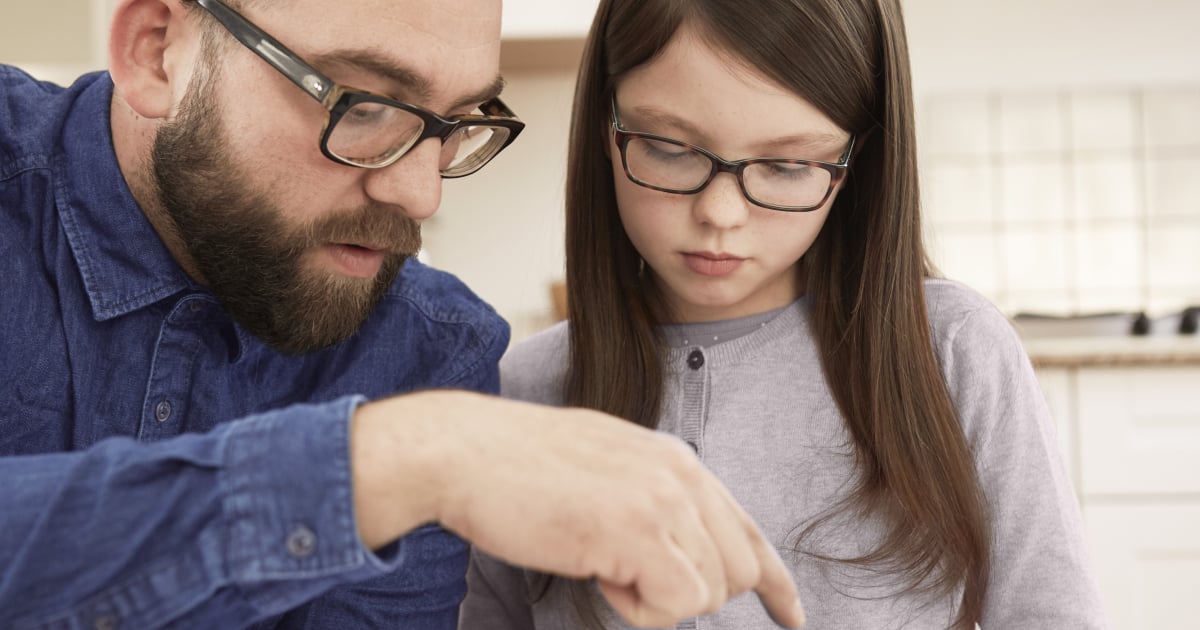Myopia, often called “nearsightedness,” is a progressive condition that makes distant objects appear blurry while close objects remain clear. This might sound like a minor inconvenience, but myopia goes beyond a standard vision issue – it’s a growing concern with potential long-term impacts on eye health.
Myopia is rapidly increasing, especially among children, and by 2050, it could impact 5 billion people worldwide—most of them children1.
Without intervention, myopia can progress and lead to more serious eye conditions, such as retinal detachment, glaucoma, or even early-onset cataracts. Fortunately, there’s good news: early intervention through a comprehensive myopia management plan can make a profound difference. By managing myopia early, we can help protect your child’s vision now and set them up for a bright, healthy future.
Why invest in myopia management?
We recognize that myopia management can be a substantial financial commitment. However, this investment supports not only your child’s current vision but also their future eye health and financial well-being. By addressing myopia early on, you may help prevent costlier eyecare and more complex treatments down the road.
Let’s look closer at how myopia management can prevent future vision care expenses.
Reducing the risk of future vision-related complications
Patients with progressive myopia face an increased risk of complications like retinal detachment, maculopathy, glaucoma, and early-onset cataracts2. Treating these conditions can involve invasive procedures, frequent monitoring, and long-term care, often significantly impacting quality of life. Additionally, lower levels of myopia are associated with better surgical outcomes if your child elects for corrective surgery in the future.
Reducing ongoing costs through early management
Managing myopia during childhood can reduce the need for ongoing, costly corrective lenses or interventions over time. Left untreated, myopia typically progresses, leading to a greater reliance on stronger prescriptions. This can result in higher expenses for specialized lenses, thicker prescriptions, and, in some cases, surgical interventions to restore vision.
When weighing the cost of early myopia management, think of it as an investment in lifetime savings. Early intervention can mean fewer and less-intensive treatments down the line. So while the initial cost might seem high, taking action early can mean real savings in the long run by keeping eyes healthier and reducing the cost of corrective eyewear over their lifetime.
How early myopia management can improve surgical outcomes
Did you know that managing myopia early can support better outcomes for corrective surgeries like LASIK in the future? High levels of myopia can make these procedures trickier, sometimes requiring more corneal tissue removal, which can reduce precision and stability. When myopia is managed in childhood, it can help ensure that less correction is needed, making these surgeries potentially smoother and more effective in adulthood.
Higher levels of myopia are also associated with certain risks, like thinner corneas3, which may increase the chance of complications in procedures like LASIK. By managing myopia early, families can help children maintain healthier eye structures over time, improving candidacy for these options if they decide to pursue surgery later on.
In short, early myopia management provides a strong foundation for future corrective choices, giving your child the widest range of safe and effective options. For families looking toward long-term vision health, this proactive approach supports both immediate needs and a brighter vision future.
Quality of life beyond vision
Good vision goes far beyond clear eyesight – it influences how children experience the world and participate in their day-to-day lives. By managing myopia, we can enhance a child's overall quality of life. Here’s how:
Positive childhood experiences and self-confidence
Children with untreated myopia are often less comfortable participating in activities like sports, art, and outdoor play. Clearer vision helps them feel more confident and reduces their reliance on glasses and frequent prescription changes, empowering them to engage more fully without hesitation.
Reduced visual strain in everyday life
Myopia can lead to visual discomfort, especially when children are reading, doing homework, or spending extended time on digital devices. Myopia management can reduce the progression that typically increases eye strain, allowing children to focus more comfortably on both near and distance tasks, enhancing their academic performance and enjoyment of everyday activities.
Improved confidence in the classroom
Clear vision is essential for kids to thrive in the classroom, boosting both their focus and confidence. When myopia is managed early, children often have fewer vision-related distractions, making it easier to connect with friends and engage in school activities without the added difficulty of blurry vision or eye strain. Supporting their vision can help them feel more independent and able to keep up academically. To learn more about the link between eye health and school success, please read our post on back-to-school vision health.
Investing in myopia management means more than preserving eyesight – it’s a commitment to supporting your child’s development, comfort, and confidence as they grow.
Talking to your provider about myopia solutions like MiYOSMART®
For parents considering myopia management, MiYOSMART® lenses offer an innovative, non-invasive way to slow myopia progression. These lenses are backed by extensive research and clinical studies and were developed specifically with children’s long-term eye health in mind. MiYOSMART® lenses use HOYA’s D.I.M.S. (Defocus Incorporated Multiple Segments) technology, which uses a patented and award-winning lens design correct vision and slow myopia progression.

Real-world impact and results of MiYOSMART®
MiYOSMART® lenses have been shown to slow myopia progression by as much as 100%4, giving children an effective, non-invasive approach to managing myopia. Parents report that children using MiYOSMART® lenses experience greater comfort and visual clarity, which can make focusing in school and engaging in activities, like reading and sports, easier.
Durable, active-friendly design
MiYOSMART® lenses are designed with active children in mind. They are durable and scratch-resistant, ensuring they stand up to daily wear and tear. For parents, this durability offers peace of mind, knowing that the lenses are resilient enough to support a child’s busy, active lifestyle.
Affordability and value – now available with a special promotion
To make myopia management more accessible, we are offering a free upgrade to MiYOSMART® Sun Solutions for a limited time. This pricing structure allows families to invest in comprehensive myopia management while also protecting their child’s eyes from sunlight.
Secure a bright future with early myopia management
Investing in myopia management means more than protecting eyesight—it’s a commitment to your child’s long-term quality of life and eye health. By taking early action, you can help set them up for a future with fewer vision concerns and a strong foundation for healthy eyesight. For a personalized approach, reach out to an eye care provider who specializes in myopia management. To find a specialist near you, visit HOYA’s Find an ECP page and filter for “MiYOSMART.”
References:
1 Brien Holden Vision Institute. Article at: Prevalence: 50% of the world myopic by 2050.
2 Flitcroft DI, He M, Jonas JB, et al. Pathogenesis of Myopia: The Interactions of Retinal, Optical, and Environmental Factors. Prog Retin Eye Res. 2012;31(6):622-660. DOI: 10.1016/j.preteyeres.2012.06.004.
3 Wang Y, Wang J, Han Y, et al. Comparison of corneal thickness and biomechanical properties between myopic and emmetropic eyes. Int J Ophthalmol. 2023;16(2):406-412. DOI: 10.18240/ijo.2023.02.10.
4 No myopia progression was observed in 21.5% of the cases among children wearing MiYOSMART spectacle lens during a 2-year randomized controlled clinical trial. Lam CSY, Tang WC, TseDY, Lee RPK, Chun RKM, Hasegawa K, Qi H, Hatanaka T, To CH. Defocus Incorporated Multiple Segments (DIMS) spectacle lenses slow myopia progression: a 2-year randomized clinical trial. British Journal of Ophthalmology. Published Online First: 29 May 2019. doi: 10.1136/bjophthalmol-2018-313739
